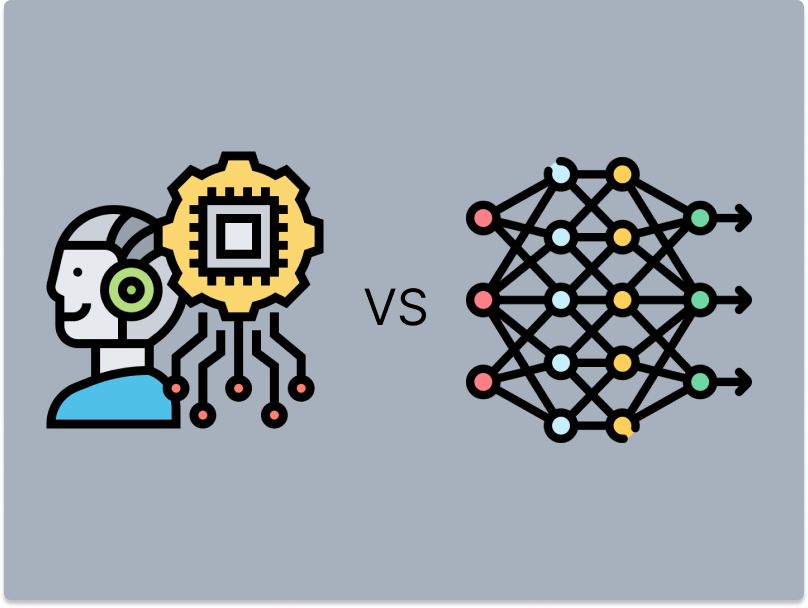Machine learning and deep learning are both subfields of artificial intelligence (AI) that involve training algorithms to learn patterns and make predictions from data. However, they differ in terms of the techniques used, the types of data they handle, and the complexity of the models they employ. In this article, you will learn about the specific differences and similarities between each case, as well as some potential applications for each.
Machine Learning:
Machine learning (ML) is a subset of artificial intelligence that focuses on developing algorithms that can learn from and make predictions or decisions based on data. Machine learning algorithms can be categorized into three main types:
-
Supervised Learning: In supervised learning, the algorithm is trained on a labeled dataset, meaning that each example in the dataset is associated with a target or label. The goal is to learn a mapping from input features to the target variable based on the labeled data. Common tasks in supervised learning include classification and regression.
-
Unsupervised Learning: In unsupervised learning, the algorithm is trained on an unlabeled dataset, meaning that there are no target labels provided. The goal is to explore the structure or patterns within the data without explicit guidance. Common unsupervised learning tasks include clustering, dimensionality reduction, and anomaly detection.
-
Reinforcement Learning: In reinforcement learning, the algorithm learns to interact with an environment to achieve a goal. It receives feedback from the environment in the form of rewards or penalties based on its actions, and the goal is to learn a policy that maximizes cumulative rewards over time. Reinforcement learning is a popular technique used in various applications like game playing, robotics, and autonomous driving.
Deep Learning:
Deep learning is a subset of machine learning that focuses on the development and training of deep neural networks, which are artificial neural networks with multiple layers (hence the term "deep"). Deep learning algorithms can automatically learn hierarchical representations of data directly from raw inputs, without manual feature engineering.
The distinguishing characteristics of deep learning include:
-
Neural Networks: Deep learning algorithms are based on artificial neural networks, which are computational models inspired by the structure and function of the human brain. Neural networks consist of interconnected layers of nodes (neurons), each of which performs a simple computation and passes its output to the next layer.
-
Deep Architectures: Deep learning models typically have multiple layers (hence the term "deep"), allowing them to learn hierarchical representations of data. Each layer in the network extracts increasingly abstract features from the raw input data, leading to more powerful and flexible representations.
-
Automatic Feature Learning: Deep learning algorithms can automatically learn relevant features directly from raw data, eliminating the need for manual feature engineering. This makes deep learning particularly well-suited for tasks involving complex, high-dimensional data such as images, audio, and text.
Key Differences:
-
Representation Learning: Deep learning algorithms automatically learn hierarchical representations of data, whereas traditional machine learning algorithms often rely on manual feature engineering or feature selection.
-
Complexity: Deep learning models can capture complex patterns and relationships in data, making them well-suited for tasks with large amounts of data and high-dimensional input spaces. Traditional machine-learning models may struggle with such complexity.
-
Computation: Deep learning models typically require more computational resources (e.g., processing power, memory) and data to train compared to traditional machine learning models. Training deep neural networks can be computationally intensive and require specialized hardware (e.g., GPUs).
Conclusion
In summary, while both machine learning and deep learning involve training algorithms to learn from data, deep learning differs in its use of deep neural networks to automatically learn hierarchical representations of data directly from raw inputs, without the need for manual feature engineering. Deep learning has demonstrated remarkable success in a wide range of applications, particularly in tasks involving complex, high-dimensional data such as image and speech recognition.








